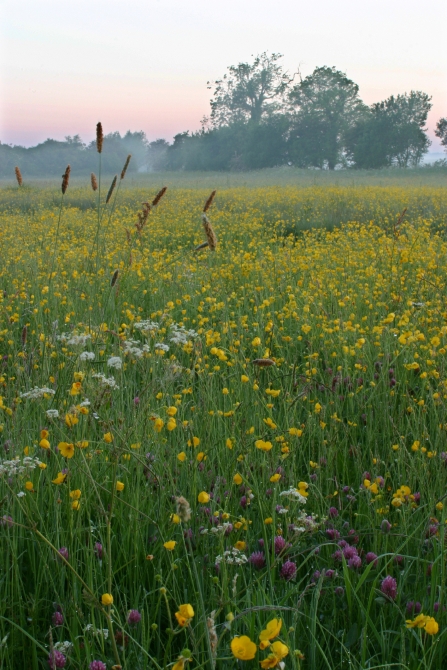Despite traditionally being considered a ‘green and pleasant land’ the UK is one of the most nature depleted countries on the planet. Shocking figures about levels of species and habitat loss have become so commonplace to a point where they seem to lack impact - but the statistics relating to the loss of wildflower meadows are so shocking that they cannot simply be ignored.
Meadow Appeal

Scott Tilley
Across the UK, it is estimated that we have lost 97% of wildflower meadows, sometimes called hay meadows, since the 1930s but here in Nottinghamshire the loss is believed to be as high as 99%.
Today, the Trust, which cares for nature reserves across Nottinghamshire has launched a funding appeal to raise at least £10,000 to support its work to protect the meadows in its care, support habitat restoration and top sustain the annual cycle of management which supports an array of species – including vital pollinators and ground nesting birds such as the skylark.
...fundamental to protecting our increasingly fragile natural environment.Nottinghamshire Wildlife Trust
Speaking about the new appeal, Head of Communications Erin McDaid said:
“Meadows are havens for wildlife and home to some of our rarest and hardest working species. They provide a feast for the senses as well as being fundamental to protecting our increasingly fragile natural environment.”
A healthy meadow surrounded by a traditional hedgerow can host a vast array of species, from wildflowers including great burnet, pyramidal orchid, red clover and ox-eye daisies. These flowers are not just important for their beauty, they also support a multitude of invertebrates ranging from vital pollinators such as industrious bumblebees to marvellous butterflies such as the eye-catching marbled white butterflies.
They are also home to small mammals, including protected pipistrelle bats and harvest mice as well as birds ranging from beautiful yet threatened skylark, turtle dove and yellowhammer to larger birds of prey like barn owls and kestrels.
Nottinghamshire Wildlife Trust has approximately 28 hectares of meadows in its care including jewels like Ashtons Meadow near Retford, Glebe Field at Attenborough, Besthorpe Meadows alongside the Trent north of Newark and at Skylarks Nature Reserve at Holme Pierrepont, which its team of staff, volunteers and nature-grazers are dedicated to keeping in top condition.
[Meadows] also provide natural services such as acting as natural flood defences and locking away carbon which helps limit the impact of climate change – the biggest driver of nature lossNottinghamshire Wildlife Trust
Erin continued: “Meadows not only help the wildlife that thrive within them, but they are also a value part of our cultural heritage, inspiring artists and poets and lifting our spirits. They also provide natural services such as acting as natural flood defences and locking away carbon which helps limit the impact of climate change – the biggest driver of nature loss. As well as being worth protecting for their inherent value to people and nature, as we face up to the combined climate and nature crises – the value of these functions should not be understated.”
The Trust, which last year celebrated its 60th Anniversary, is dedicated to restoring and keeping its meadows in top condition and its team of staff, volunteers and nature-grazers work year-round to sustain the important annual cycle which helped create these magical habitats. Meadows need to be cut once a year, usually in mid-late summer after the wildflowers have set seed (Nottinghamshire Wildlife Trust leaves 10-20% uncut to continue to provide food and shelter for wildlife). Cutting helps remove excess nutrients from the soil and limits the growth of more robust species that would otherwise outcompete delicate grasses and wildflowers.
This work is completed with a mix of traditional tools such as scythes or on larger sites, using specialist machinery. Once cut, meadow and grassland areas are grazed by traditional breeds of sheep and cattle, helping prevent the encroachment of scrub like brambles and to tread in wildflower seeds that have dropped to the ground.
Given the rarity and importance of the meadows in our care it is vital that we have the resources to ensure that we can continue the vital cycle of annual management that helped shape them.Nottinghamshire Wildlife Trust
Erin added: “Given the rarity and importance of the meadows in our care it is vital that we have the resources to ensure that we can continue the vital cycle of annual management that helped shape them. By supporting our appeal people can ensure that we have the tools and equipment our staff and volunteers need to manage the sites we protect and that we have the resources to maintain our nature grazing programme which is so vital to restoring and sustaining these cherished habitats.”
Get involved
Further details about the Trust’s Meadows Appeal, including ways to donate and where to see remaining meadow habitats can be found on our appeal page via the button.





